
| Home | Photos | Calendar | Newsletter | Members | Info | Join | About | Links | Contact |
"The Relay" Online Newsletter
|
 | 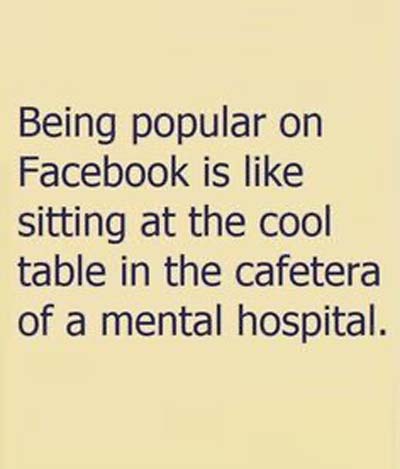 |
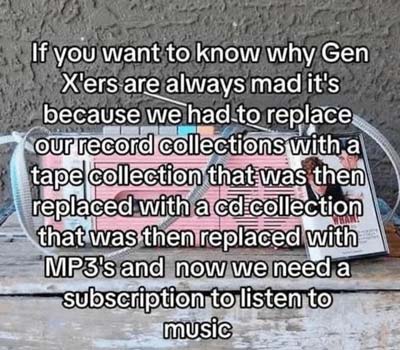 | 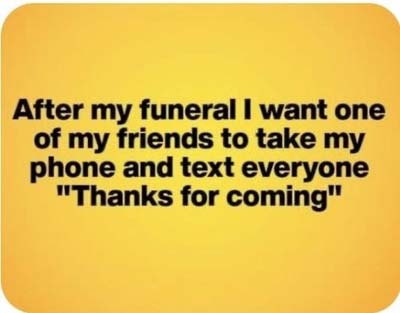 |
 | 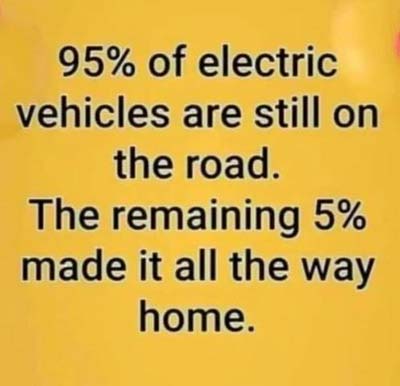 |
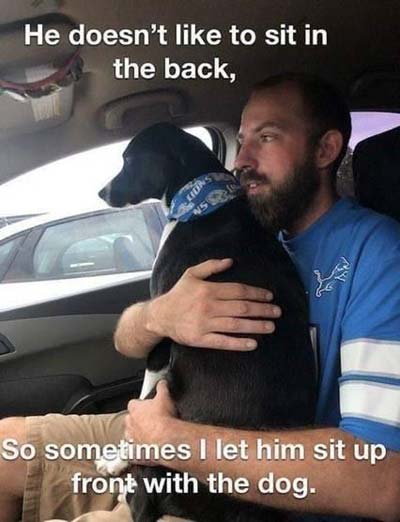 | 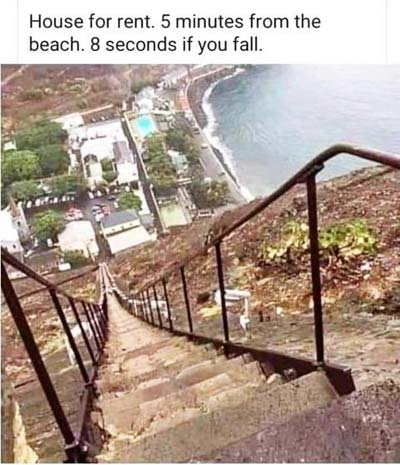 |
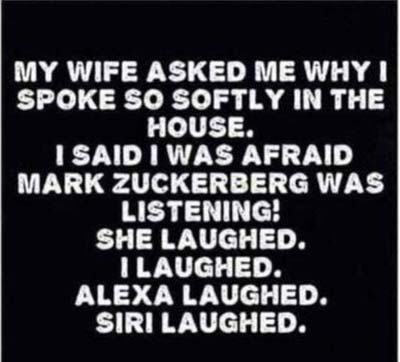 | 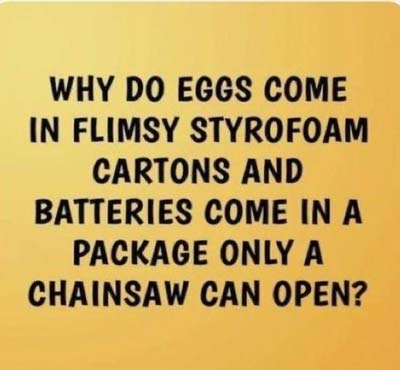 |
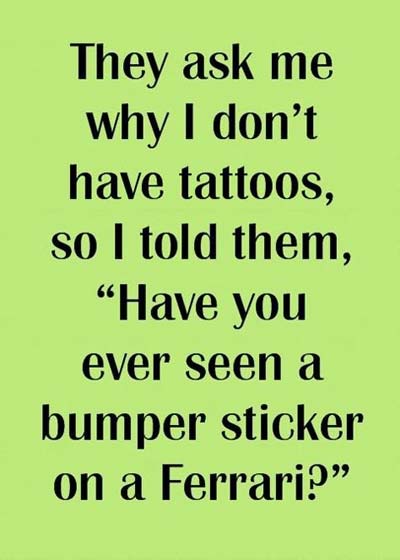 | 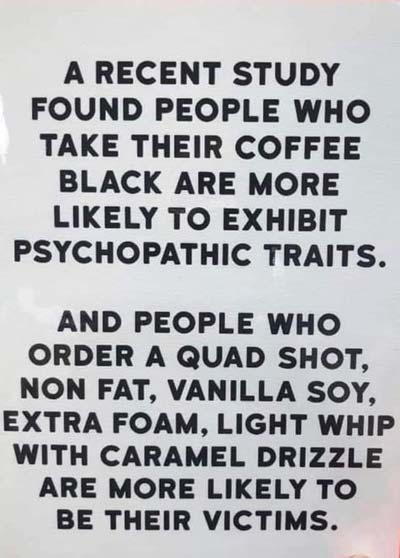 |
Automakers Face $10 Billion Tariff Bill on Canadian, Mexican Imports So Far This Year
From The Epoch Times
The estimate from Anderson Economic Group comes as Stellantis shifts production to U.S. plants, suggesting tariffs may already be reshaping manufacturing plans.
U.S. automakers have paid more than $10 billion in tariffs on vehicles and parts imported from Canada and Mexico so far this year, according to a new analysis by Anderson Economic Group—a cost that may already be influencing where companies build, as Stellantis’s recent move to shift production from Canadian to U.S. plants suggests.
In an analysis released on Oct. 16, Anderson Economic Group (AEG) estimates that automakers incurred $6.45 billion in duties through July and projects the total will top $10.6 billion by the end of October, after accounting for missing data and “unpublished corrections” issued by the U.S. Census Bureau.
“Even this figure underestimates the total tariff cost, as it includes only the two major categories of motor vehicle imports, and does not include any separate tariffs on steel and aluminum, nor imports from Europe or Asia,” Patrick L. Anderson, CEO of AEG, said in a statement.
President Donald Trump has said a key aim of his tariff policies is to pressure companies to bring production back to the United States. “If you want your tariff rate to be zero, then you build your product right here in America because there is no tariff if you build your plant, your product in America,” Trump said as he announced his reciprocal tariff policy at the White House in April.
One of the first major companies to respond has been Stellantis, the parent of Chrysler, Jeep, and Ram. In April, Stellantis temporarily paused production at two major assembly plants in Canada and Mexico, and on Oct. 14 announced a $13 billion investment to expand its U.S. manufacturing footprint—the largest single commitment in the company’s history.
The plan includes reopening the Belvidere plant in Illinois, expanding operations in Michigan, Ohio, and Indiana, launching five new vehicle lines, and adding more than 5,000 U.S. jobs.
Stellantis is simultaneously shifting production of some Jeep models currently built in Ontario to U.S. facilities, a decision that has prompted formal threats of legal action from the Canadian government.
Industry Minister Mélanie Joly accused the automaker of breaching subsidy agreements tied to maintaining a manufacturing presence in Brampton, Ontario. In her letter to Stellantis CEO Antonio Filosa, Joly explicitly referenced “the current U.S. tariff environment” and the “complex challenges” it is creating for manufacturers, suggesting that Stellantis is responding to those pressures as it reconsiders its North American production footprint.
Meanwhile, the Trump administration’s tariff policies continue to widen.
Expanding on earlier measures targeting passenger vehicles and components, Trump on Oct. 6 announced a new 25 percent duty on all medium- and heavy-duty trucks entering the United States, citing national security reasons and the need to shield domestic truck makers from foreign disruption. That move follows recent trade arrangements with Japan and the European Union in which the United States imposed 15 percent tariffs on light-duty vehicle imports.
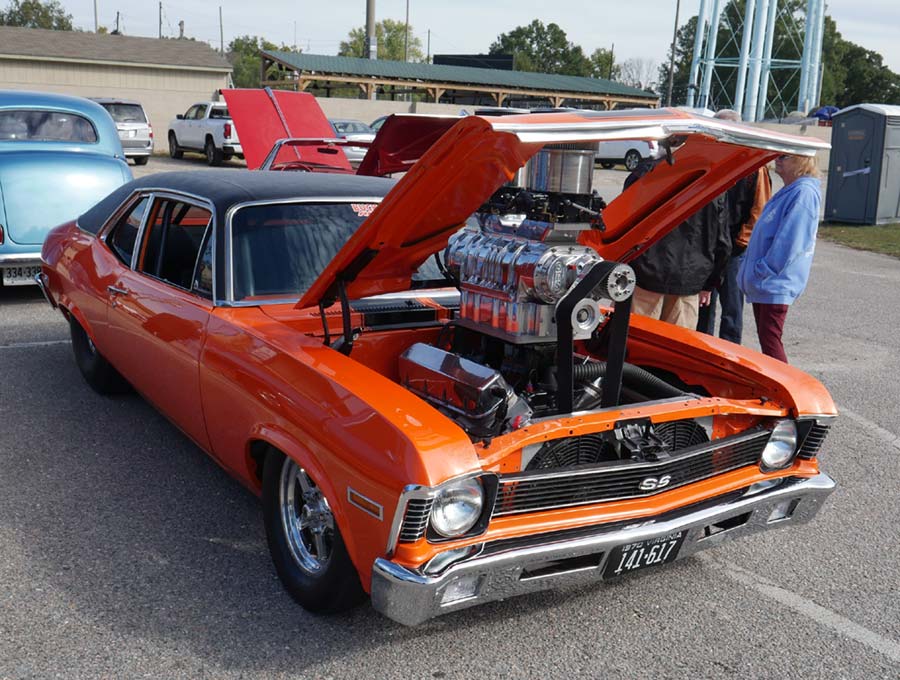
Saints & Sinners Cruise-In October 18
See all the photos at Album - opens to a new window.
Jewels Found On Ebay
Here are a couple of hot finds from Ebay Motors.

eBay item number: 286836700828
$17,500 or best offer
eBay description: 1969 Mustang Mach 1 Fastback
H Code 351 4 Speed Car
Factory Front Disc Brakes
Posi 9 Inch Rear End (Ratio Unknown)
Has Original Clutch Pedals and Rod through firewall no Z Bar
It is an Original Ford Shaker hood has no rust but has damage on left rear
Has original front buckets with headrest no rear seats or rear interior
Was a drag car most of its life at Lebanon Valley Dragstrip
Comes as seen with no engine or transmission
Needs complete restoration
Stamped vin on apron matches vin tag
No tag on door
New York State is a non title state for pre-1973 vehicles
Car is being sold with a notarized bill of sale
A 500.00 non-refundable deposit is due immediately
Must be paid in full within 3 business days
We can work with you on storing it while you arrange shipping but must be paid in full within 3 business days
Car rolls and steers for loading and we will assist transport company and make it a smooth process when it’s picked up
What is up with 69 Mustangs? The prices for even 6-cylinder ones are through the roof. Here we have a 69 Rust-stang roller missing a lot of parts including the door/trim tag and no title. Somehow having a few faded drag stickers on the back glass ups the price. It would cost more than 17,500 to get all the parts just to complete.
Next up is a "project".

eBay item number: 376619732923
$3,150.00 or Best Offer
eBay description: 1949 Ford Woodie Wagon with Clean Title. Missing engine and transmission. Roof is solid, the floor has been replaced, and driver side rocker has been replaced. Some rust on the tailgate. Many extra parts included, window moldings, front and rear bumpers with bumper guards, most of the grill with trim pieces, headliner bows, extra tailgate latches, heater core, new side rocker, extra fenders and extra inner fender wells, extra dash, taillight, and other miscellaneous parts. Primed body. Great project car and great project for a drivetrain swap.
MAKE OFFER! Must Sell losing storage space.
How can it be a woody if there is no wood? Looks like a skeleton of a car. And of course no drivetrain and plenty of rust. This couldn't even be used as yard art.

eBay item number: 116823223367
$5,000.0 no bids
eBay description: EBAY AUCTION
1967 Ford Mustang Fastback Project / Parts car
Not going to sugar coat this one whatsoever .
She is rusted . stripped and was left for dead
I am 95 % convinced I know what this car started life as .
I will not even say the name but believe it is one of the first 200 cars built from Ford and ______?
Have I got your attention yet ?
Study the photos to make up your own mind . If you know you know !
Read this description carefully
High lights include brake cool ducting holes cut into both outer rear wheel wells .
Remanences of holes where the factory roll bar was welded in and surgically removed using spot weld cutters
Pass side quarter panel scoop area has two fiberglass chards of what is left of a functional brake scoop suggesting the scoop was broken when it was removed .
Strong indications of the original color are present that it was Dark Moss Green
In 1968 Ford renamed this color to Highland Green and just so happens to be the famous Bullit movie car color
Front shock towers are not reinforced strongly indicating that this is one of the Small block V8 versions
Tail light panel cutout to fit longitudinal tail light installation
Every single Serial number / tag or plate relating to it's origin has been cut off and no longer exist with this particular car .
Structure of car appears straight with no signs of any heavy collision damage ever
The remanences of this car in my opinion can be resurrected a number of ways .
Can never again be a numbers match car so why not have some fun with it ?
Firstly use as a donor for a coupe to fastback conversion .
Second , build it out as a full fledged Race car , whether it be a Drag or a Twisty curve road race style
Third , late model Mustang chassis swap complete with a Coyote drivetrain .
Probably other ways to go with it but these examples resonate with me the most .
What you see is what you get , no drivetrain , interior , etc whatsoever included .
Selling AS IS condition on a Bill of sale . No other documentation will be provided
U.S. buyers consult you border officials / broker to avoid any unforeseen importation problems
Auction starts at $5000 highest bidder after that at conclusion of Auction owns the car .
Another super valuable fastback Rust-stang. "Not going to sugar coat this one whatsoever" - nothing like an honest seller but anyone who does not need a seeing eye dog to lead them around can see this is not worth 5K. I have to wonder if anyone buys stuff in this kind of shape. "She is rusted . stripped and was left for dead" - there's a reason for that.

The Moonlight Cruise-In Grand Finale October 18
See all the photos at Album - opens to a new window
Demonizing and Prosecuting Fossil Fuels Companies: Misguided and Pernicious
By Mark Hendrickson, contributor; The Epoch Times
On a net basis, fossil fuels have abundantly blessed humankind. The producers of those fuels deserve our gratitude, not our censure or condemnation.
One of the more lamentable aspects of the climate alarmist movement is the demonization and persecution of fossil fuel producers.
In what might be called “climate lawfare,” the pending legal case Leon v. Exxon Mobil has plaintiffs seeking monetary damages from a fossil fuel giant for the “wrongful death” of one Julie Leon, who died from heatstroke in 2021 ”after driving almost 100 miles without air conditioning on a day when temperatures hit ... 108 degrees.”
Another recent incident involves a group of young Americans who have petitioned the Inter-American Commission on Human Rights (IACHR) to, in some unspecified way, “hold the U.S. accountable.” They accuse the United States of “violating international human rights laws by backing fossil fuel production despite the [alleged] accelerating climate crisis.”
In the Leon case, plaintiffs’ attorneys will find it difficult to convict ExxonMobil for poor Ms. Leon’s death. Whether she chose not to turn on the air conditioner in her car or whether that unit was inoperative, neither circumstance can be blamed on oil companies. This lawsuit boils down to an attempt to punish oil companies because a record-high temperature occurred in Washington State on the date of Ms. Leon’s demise.
For starters, local weather is not climate. Also, there have been warmer periods in Earth’s past before the Industrial Revolution and the emergence of the oil and gas industry (e.g., Medieval, Roman, and Minoan Warm Periods) when CO2 concentrations were lower. Also, if CO2 were the indisputable cause of record-high temperatures, then there should be more record highs now than earlier in our country’s history; yet the historical temperature records show that there were far more record-high temperatures when the concentration of carbon dioxide in the atmosphere was much lower. (See graph)

Further, it is impossible to quantify how much, if any, of the overall slight rise in global temperatures over the past century has been due to the greenhouse effect (in which, by the way, water vapor is far, far more impactful than CO2). If increases of CO2 in the atmosphere make temperatures rise, why, even though the concentration of CO2 was rising rapidly then, was the period from the 1940s to late 1970s so cold that scientists in the ‘70s were predicting a new ice age? How can any scientist prove beyond doubt that all the modest global warming since the end of the Little Ice Age in the 19th century has been due to the greenhouse effect, and none by changes in albedo (cloud cover), solar activity, shifting ocean currents, volcanic and tectonic activity, etc.?
Even if one assumed, for the sake of argument, that the entire temperature increase of the past half-century was due to CO2, scientists don’t agree about what percentage of CO2 was emitted into the atmosphere by burning fossil fuels and what percentage came from natural causes. And since more fossil fuels have been burned outside the United States and came from fuel produced by non-U.S. companies, the share of CO2 emissions resulting from American consumption of fossil fuels would account for only a tiny fraction of a degree of the warming.
Even the very premise that a warmer climate is a more dangerous climate is refuted by evidence. In fact, survey after survey documents that far more humans die from cold than from heat. These figures strongly suggest that a warmer planet would, on a net basis, save lives. Indeed, datasets show that the U.S. death rate from climate-related phenomena has plunged more than 90 percent in the past century.
And since today’s modestly warming climate has resulted in longer growing seasons and increased CO2 has produced increases in agricultural productivity, the evidence leads to the conclusion that the use of fossil fuels is beneficent, not deleterious.
As for the petition to the IACHR to censure the U.S. Government for not halting the domestic production of fossil fuels, the case of the young Americans behind the petition is even more tenuous. They have wisely opted not to litigate this issue in a court of law, for unlike the Leon case, in which a family suffered the loss of one of their members, the plaintiffs have suffered no specific loss.
Moreover, their strategy is distinctly undemocratic: They are asking the seven commissioners of the IACHR (none of whom is a United States citizen, none of whom was popularly elected) to usurp a fundamental precept of our republican form of government—namely, that our elected representatives should debate and legislate the rules by which we live. If fossil fuel production in the United States is to be restricted by law, then the proper venue in which to make such a determination is the U.S. Congress, not the IACHR.
In both of these cases, to argue that fossil fuel production must be reduced or banned rests on dubious assumptions and arbitrary beliefs. The following questions are unanswerable, and therefore provide no factual basis for prosecuting fossil fuels producers: What is the “right” temperature? What is the “right” concentration of CO2 in the atmosphere? What percentage of the modest warming of the last two centuries is attributable to the greenhouse effect as opposed to other factors such as those mentioned four paragraphs above?
There is a more important point about the domestic production and consumption of fossil fuels that is routinely overlooked by those who are targeting fossil fuels for elimination—i.e., the manifold benefits of fossil fuels for the human race. In addition to amplifying our economy’s wealth-generating capabilities, greatly increasing human mobility, and powering the myriad electric gizmos that enhance our prosperity, fossil fuels have been humanity’s most effective tool for shielding us from the uncomfortable and dangerous temperatures that weather (i.e., short-term climatic phenomena) persists in challenging us with. Heat generated by fossil fuels has made life in Minnesota, Michigan, and Maine far more tolerable and less dangerous than it otherwise would be. Fossil fuel-powered air conditioning has been both a lifesaver and a great enhancer of the quality of life in Arizona, Texas, Florida, et al.
The fact is that hundreds of millions, if not billions, of human lives have been saved, prolonged, and made more livable by the burning of fossil fuels. Let us not forget, either, that when fossil fuels are used to power our electric grid, the resulting reliability and steadiness of the grid makes costly and potentially deadly brownouts and blackouts far less likely than is the case when intermittent, fluctuating sources of energy like wind and solar are used.
The bottom line is that, while every temperature-related death, such as Julie Leon’s, is tragic, we need to remember that millions of Americans have been spared such a fate by the availability of air conditioning—a lifesaving amenity powered over the years primarily by fossil fuels. On a net basis, fossil fuels have abundantly blessed humankind. The producers of those fuels deserve our gratitude, not our censure or condemnation.
It makes no sense, logically or morally, to demonize, denounce, and seek to hurt our benefactors. And if those who mistakenly believe that fossil fuels pose a mortal danger to life on Earth really want to deprive the rest of us of the manifold benefits of fossil fuels, they owe it to us to go through the democratic process. That would give each of us a chance to vote on the question, which would be so much fairer than trying to get some solitary judge or a few unelected bureaucrats to impose such a harmful restriction on the rest of us.

McKenney Cruisers Cruise-In (Appreciation Day) October 19
See all the photos at Album - opens to a new window.
Report Reveals Which Cars Are Most Likely to Get Pooped On
From Gizmodo
“If you’ve ever felt like your car is a magnet for bird droppings, you’re not wrong.”
Birds poop for very scientific, evolutionary reasons. That said, the beauty of science is difficult to appreciate when it materializes as unwanted poop splotches on the hood of your car. But there may be particular colors or driving habits that might make a car more attractive to birds looking for a nice place to poop.
Earlier this month, Virginia-based company Alan’s Factory Outlet published the “Bird Dropping Report,” which surveyed 1,000 U.S. drivers about their experience dealing with bird mess on their cars. The report combines survey responses with ornithology research, and its conclusions reveal a mix of expected yet surprising insights into the relationship between avian bowel activity and vehicle appearance.
Is your car a poop magnet?
Overall, brown, red, and black cars were most likely to be pooped on, whereas lighter colors, such as white or silver, tended to be spared from poop. As for brands, Ram trucks appeared to be most affected by bird splatter, followed by Jeep, Chevrolet, Nissan, and Dodge.

But the study also asked participants various questions about their general experience dealing with bird mess. For instance, 58% of respondents said that a bird pooped on their car more than once in the same day, with 11% reporting that it caused paint damage.
Around 30% argued that the birds had personally “targeted” their cars, particularly owners of Lexus (47%), Tesla (39%), and Dodge (35%) vehicles. For context, Dodge and Tesla rank 5th and 7th place, respectively, on the survey’s top 10 brands most likely to be pooped on (Lexus did not make the top ten).
An avian disruption
Another intriguing takeaway from the survey was that bird mess often interfered with drivers’ daily routines. For example, 6% of participants canceled or delayed plans to address splatter issues on their car, whereas 14% reported getting pooped on while getting in and out of their car.
Dealing with bird poop can become a financial burden, too. 57% admitted to paying for a car wash specifically to deal with bird poop, whereas 39% directly cited bird poop as the reason for going to the car wash multiple times a month.
As a result, the “costs add up quickly,” the report noted. About a quarter of respondents said they spent more than $500 per year on “car washes and repairs related to bird mess.” For Tesla and BMW owners, vehicle maintenance costs due to bird poop often exceeded $500, according to the report.
The fear of bird poop also drove changes in driver behavior. More than half of survey participants expressed concern that their current parking setup didn’t provide sufficient protection from bird poop, and 38% answered that they didn’t mind walking an extra block or two to avoid “poop zones.”
Precautionary measures, courtesy of science
The survey proposes several reasons as to why birds may be attracted to certain cars. Birds in urban locations merely like to roost under trees, power lines, or street signs, as they “provide safety and visibility for birds,” according to the report. Of course, that means that any cars parked under these prime locations are “in the line of fire,” it added.
But birds also see color differently from humans, due to an extra cone cell in their eyes that allows them to detect ultraviolet light. So it may be that brown, red, and black appear more attractive to birds—a tendency that has been explored by ornithologists before.
“If you’ve ever felt like your car is a magnet for bird droppings, you’re not wrong,” the report stated. “Science suggests there may be more behind the mess than bad luck.”

7th Annual Dressler Farm Car Show October 26
See all the photos at Album - opens to a new window.
The Briefs
The Ivanpah Solar Electric Generating System opened to great fanfare a little more than a decade ago, with a $1.6 billion loan guarantee from the U.S. Department of Energy, part of the Obama administration’s push to install green energy production on public lands. The project has now lost both of its utility customers and will be decommissioned.
Police in Ohio shared body camera footage of the pursuit of a giant inflatable pumpkin that broke free from in front of a local home and went rolling through town.
The Parma Heights Police Department said on social media that officers found themselves "in hot pursuit of a giant inflatable pumpkin" rolling through town in the early hours of Wednesday.
The body camera footage shows the pumpkin being held in place at the side of a road by an officer and a member of the public.
The officer explains he had been chasing the pumpkin down the road. "I was pretty much in pursuit," the officer says.
Police ended up stuffing the pumpkin into the back of a patrol car for transport back to its owner's yard.
"Officers can confirm that Cinderella's carriage did, in fact, turn back into a pumpkin just after midnight in Parma Heights," police wrote.
A mystery cow found wandering loose on a Pennsylvania highway was successfully roped by a man on horseback, but the bovine's origins remain unknown.
The cow held up traffic Wednesday when it was spotted along the median of Interstate 79, near Cranberry Township and Evans City in Butler County.
Local farrier Kyle Carson heard about the situation and offered his services to local authorities. He responded to the scene with his horse, aptly named Highway.
"The crews there had traffic stopped, and we sat there for a little bit and just kind of assessed the situation and let the cow relax a little more and just hang out. And then I just rode right up here and roped her and then took her over to the trailer," Carson told WTAE-TV.
Pennsylvania State Police said they checked with local farmers, but the cow's origins are a mystery. The animal was taken to a local farm to receive veterinary care while authorities attempt to determine where it came from.

Dude, don't confess your crimes to ChatGPT. In Springfield, Missouri, 19-year-old Ryan Schaefer went on a crime spree on Sept. 28 in a Missouri State University parking lot, The Smoking Gun reported. The college sophomore allegedly shattered car windows, ripped off side mirrors, dented hoods and broke windshield wipers. When Springfield police officers visited him at his apartment the next day, Schaefer admitted that the person on surveillance video did bear a "resemblance" to him and turned his phone over as evidence. Investigators found a conversation between Schaefer and ChatGPT, which included questions such as "what if I smashed the ... outta multiple cars" and "is there any way they could know it was me." Schaefer went on to make vague threatening statements to the AI tool; he was charged with felony property damage.
As if the idea of toddlers driving motor vehicles wasn't breathtaking enough, now you can purchase a luxury car for your wee one, Oddity Central reported on Oct. 1. For the low, low price of $49,000, your tot can proudly sport around in a Russian-made scaled-down Mercedes-Benz SL300 with a top speed of 28 mph. The model, popular in the 1950s and '60s, features adjustable leather seats, functional lights and a subwoofer, for the kids' refined listening tastes. Happy motoring!

On Sept. 22, as Lubbock (Texas) mounted police officers Bryson Lewis and William Trotter assisted with a routine patrol, they stopped a man who was walking in the road, rather than on the sidewalk, KCBD-TV reported. The officers thought 42-year-old Joseph Ramirez was acting suspiciously, and when they asked to check his pockets, he said no. Then Trotter joked that he had a "narcotics-smelling horse" -- and Ramirez took off running. "He took it seriously, and the race was on," Trotter said. But the police horses caught up with him quickly, and Ramirez was charged with evading arrest and tampering with physical evidence with the intent to impair. "Chasing bad guys is part of the fun in it for us," Lewis said. "So when you get to chase down a bad guy and not even get tired, it's a good day."
Keajion L. Jennings of Fairview Heights, Illinois, told the Fairview Heights police officer whose car he had just rear-ended that he did it because he was "bored" and "I hate cops." The Belleville News-Democrat reported that on Sept. 24, as officer Travis Montgomery stopped a different car for an expired license plate sticker, Jennings drove his 2018 Camaro into the back of Montgomery's squad car. Jennings "admitted he had consumed alcohol and weed gummies," a department statement said. He was charged with criminal damage to government-supported property, two counts of aggravated battery and one count of aggravated assault. Montgomery and the occupants of the other car were unhurt.
In Palm Coast, Florida, Flagler County Sheriff's deputies pulled over 57-year-old Michael Stanek of Welaka on Sept. 23 for speeding -- or in his case, superspeeding, Fox News reported. Stanek was going 107 mph. When an officer asked him why he was going so fast, bodycam video captured his excuse: "I have an appointment with my barber." Chances are he didn't make it; the officer said he would spend the night in jail after "weaving in and out of traffic" and "putting other people's lives in danger." (Now if he'd only been Jay Jones he wouldn't have gone to jail, just community service.)

A 19-year-old man riding in an SUV full of other teenagers has died after authorities said the vehicle was shot at and crashed off Interstate 64 Thursday evening.
A suspect or suspects are at large, according to Virginia State Police.
Troopers said a silver SUV carrying five teenagers had been struck by gunshots from an unknown vehicle before the SUV, while fleeing, was run off the roadway and crashed. The crash caused the westbound lanes of I-64 close to exit 281, which is near Military Highway and Norfolk International Airport, to be shut down for several hours.
The unidentified 19-year-old who was shot sustained life-threatening injuries, troopers said, and was taken to Sentara Norfolk General Hospital. State police said Friday afternoon he had been declared dead. This is one of several shootings that have occurred recently on I-64.
OPEC+ countries announce an increase in oil production next month by 137,000 barrels per day, amid concerns of a potential supply glut in the fourth quarter.
A Pennsylvania family's pet cat ended up joining them for a weekend adventure in New York City when they found the feline had stowed away atop their van for 100 miles.
The Denardo family said they made it about 100 miles from their home in Kittanning before they stopped for gas and discovered their cat, Ray Ray, was clinging to the luggage strapped to the roof.
Mara Denardo explained the family was on their way to New Hampshire for a marathon, and then on to New York.
"We're like, what do we do? We're already so far into the trip and we have a long way to go to get to New Hampshire, so my husband said, 'He's just going to have to go with us,'" Denardo told KDKA-TV.
The family said Ray Ray had managed to stay atop the vehicle for 100 miles, even while they were driving 70 mph on the highway.
The Denardos made a stop for supplies at a pet store and continued on with their weekend plans. They said Ray Ray accompanied them on their adventures from the comfort of a cat-carrier backpack.
"He had such a good time and a great adventure," Denardo said. "I actually did videos and pictures everywhere we went of him and it was like his whole adventure."
A former strip club employee has been arrested for a drive-by shooting outside the Florida establishment.
Well, actually, it was more of a drive-by cheeseburgering.
Investigators allege that Jordan Cotto, 26, showed up Friday night at Atlantis Gentlemen's Club “to speak with management,” but “got into a verbal argument.”
During the dispute, Cotto allegedly “grabbed a cheeseburger from his vehicle” and threw the delicacy, striking a male victim on the shoulder and causing him “bodily harm.” The man, however, was not seriously injured by the beef/cheese projectile.
Questioned by police, Cotto reportedly confessed to the crime and showed no remorse for the incident at the Tampa-area club. “The defendant stated he did throw a cheeseburger from his vehicle” and said “he would do it again,” according to a criminal complaint.
Cotto was arrested for battery.

Minutes after vandalizing 17 cars in a Missouri college parking lot, a 19-year-old sophomore had a lengthy ChatGPT conversation during which he confessed to the crime, asked about the possibility of getting caught, and wondered, “is there any way they could know it was me,” according to a police probable cause statement.
Ryan Schaefer was arrested yesterday and charged with felony property damage for a rampage early Sunday at a Missouri State University parking lot. Investigators allege that Schaefer shattered car windows, ripped off side mirrors, dented hoods, and broke windshield wipers during the 3 AM spree.
When confronted with surveillance footage and other evidence, Schaefer said that he could see the resemblance between the suspect and himself. At that point, Schaefer reportedly consented to a search of his iPhone.
A subsequent review of the device revealed location data placing Schaefer “at or near the scene of the crime,” as well as a “troubling dialogue exchange this defendant seems to have had with artificial intelligence software installed on his phone,” prosecutors reported.
The incriminating ChatGPT conversation--filled with typos--opened with Schaefer asking, “How f**ked am I” and “qilll I go to jail.” After the AI program “gave tips about the potential outcome of getting caught or being involved in this kind of behavior,” Schaefer typed, “What if I smashed the sh*t outta mutlipls cars.” Schaefer is locked up in lieu of $7500 bond at the Greene County jail. Upon his release from custody, Schaefer will be barred from any premise “where the primary item for sale is alcoholic beverages” and he will be required to comply with random testing for drugs or alcohol. The collegian will also have to be outfitted with a GPS electronic monitoring device.
Stellantis will invest $13 billion in the U.S. market over the next four years to expand its domestic manufacturing footprint, the “largest single investment” the carmaker has ever made.

The Porsche Factory in Germany
The United Nations body specializing in regulating global shipping voted on Oct. 17 to delay a vote on the adoption of a proposed framework that will impose a global carbon tax on international shipping—a regulation the United States has strongly opposed.
Federal regulators will no longer require banks to spell out how they manage climate-related financial risk, following objections from officials in the Trump administration and Republican lawmakers, who said that climate policy was distorting financial regulation.
In a joint move announced on Oct. 16, the Federal Reserve, the Federal Deposit Insurance Corporation, and the Office of the Comptroller of the Currency rescinded a set of rules called the Principles for Climate-Related Financial Risk Management for Large Financial Institutions.
Introduced in 2023, the rules applied to banks with more than $100 billion in assets and were intended to incentivize institutions to integrate climate considerations into governance, scenario analysis, and risk oversight.
Regulators said the withdrawal reflects a return to long-standing safety and soundness standards that already require banks to manage all material risks—without singling out climate.
The U.S. economy has remained resilient in recent months, but auto-parts companies have not. The increasing number of bankruptcies in the auto parts industry is unsettling the high-yield credit markets. This upheaval is making it increasingly difficult for low-income consumers to purchase cars, and is also compelling banks and financial institutions to write off loans to these failed companies.
Florida Attorney General James Uthmeier said his state is suing California and Washington state over their policy of allegedly ignoring federal rules regarding the issuance of commercial driver’s licenses.
Federal regulators launch probe into Waymo robotaxis following reports one of the Alphabet-owned company's autonomous vehicles drove around a stopped school bus in Atlanta.
General Motors said the conversational Google Gemini artificial intelligence will begin rolling out in its vehicles next year.
In the next three years, the automaker also plans to launch a new system that lets drivers go hands free and take their eyes off the road but still take control of the vehicle when they want.
The company announced other tech initiatives as part of its “GM Forward” event in lower Manhattan.
Rivian Automotive reportedly plans to lay off more than 600 people. Rivian Automotive is laying off roughly 4.5% of its workforce as the all-electric vehicle maker faces growing market challenges, according to a note sent to employees Thursday and viewed by CNBC. Rivian and other EV manufacturers are increasingly facing a more challenging market than they did in recent years amid changing regulations under the Trump administration, including the elimination of a $7,500 federal incentive for purchasing an EV.
Aside from regulatory issues, Rivian also faces slower-than-expected EV demand and a lack of new products until next year amid needs for cash and earnings losses. The company lost $1.1 billion during the second quarter.
Drag Racing The way it was in the 60's Nostalgia Gassers at Cordova Dragway
Repair Mistakes & Blunders
From Rock Auto
I bought a 2003 Ford F150 about two years ago that had been sitting for several years and needed some work. The good news was that it only had 80,000 miles. The bad news was the front suspension had more creaks and groans than my 70 year old body. But the price was right. I decided to replace the upper control arms, tie rods and ball joints. Took me the better part of a weekend, but the job went pretty well...or so I thought.
I knew I would need an alignment but I eye-balled the adjustments on the tie rod ends as best as possible and took it out on the road. The truck felt a little strange when I would turn the wheel, and it made a slight crunching sound when I would turn the wheel all the way right or left. I took it home and checked everything over, and it all looked good to me. I decided to take it in for alignment as I was hopeful that would take care of everything.
The alignment didn't fix the problem the way I imagined. The shop mechanic came out to talk with me after he had it on the alignment rack. Apparently, I had the left upper control arm on the right side and vice versa. I didn't realize there was a right and left! He didn't make me feel too much like an idiot as he patiently explained that they had "R" and "L" stamped on them. Embarrassed, I took it home, reversed the arms and all was good. Another lesson learned for a "do it yourself" / "learn it yourself" backyard mechanic.
Steve in Florida

Blue States Issuing ‘No-Name’ Truck Licenses
From New Conservative Post
Along a stretch of Interstate 40 in western Oklahoma, state troopers and federal immigration agents launched what Governor Kevin Stitt called one of the largest enforcement operations of its kind. The coordinated sweep, known as Operation Guardian, led to the arrest of 125 illegal immigrants driving commercial trucks—many of them operating with licenses obtained in states critics say have turned their licensing bureaus into sanctuaries.
Among the most striking discoveries was a driver whose New York-issued commercial license listed their name as “No Name Given,” a detail Governor Stitt seized upon as evidence of reckless practices beyond Oklahoma’s borders. “If New York wants to hand out CDLs to illegal immigrants with ‘No Name Given,’ that’s on them. The moment they cross into Oklahoma, they answer to our laws,” Stitt declared. “I want to thank our troopers and ICE officials for their hard work. This is about keeping Oklahomans safe.”

The arrests swept up individuals from India, Uzbekistan, China, Russia, Georgia, Turkey, Tajikistan, Ukraine, and Mauritania, according to reports. Officials emphasized that many of those detained had been operating heavy trucks despite questionable English proficiency and limited familiarity with U.S. traffic regulations. Stitt’s administration framed the operation as a direct challenge to the “blue state” policy of issuing licenses to those who entered the country illegally.
The problem gained sharper national focus after a deadly August crash in Florida. In that case, Harjinder Singh, an Indian national who crossed the border in 2018, killed three people while attempting an illegal U-turn. Singh had secured commercial licenses in Washington and California even while in active immigration proceedings, underscoring the loopholes that allow unqualified drivers onto American highways.
Three days before Oklahoma’s sweep, U.S. Transportation Secretary Sean P. Duffy announced emergency restrictions on non-domiciled commercial learner’s permits and CDLs after a federal audit uncovered widespread violations. More than a quarter of such licenses in California were improperly granted, he revealed. “What our team has discovered should disturb and anger every American,” Duffy said. “Licenses to operate a massive, 80,000-pound truck are being issued to dangerous foreign drivers—oftentimes illegally. This is a direct threat to the safety of every family on the road, and I won’t stand for it.”
The audit extended blame to Colorado, Pennsylvania, South Dakota, Texas, and Washington, highlighting cases that federal officials described as shocking lapses. One Brazilian driver even retained a valid California license to transport passengers and schoolchildren months after his legal presence expired. Federal investigators tied at least five fatal accidents since January to non-domiciled CDL holders.
By pressing forward with Operation Guardian, Oklahoma placed itself at the forefront of the campaign to restore integrity to commercial licensing. State officials portrayed their crackdown not merely as a local initiative, but as part of a wider effort to resist what they describe as the abdication of responsibility by blue states. The goal, they argued, is straightforward: to ensure that only drivers who meet both federal and state standards take the wheel of America’s largest trucks, and to prevent future tragedies before they unfold on the nation’s highways.

Problems Within Your Car Club? Don’t Walk Away—Get Involved
From: Hagerty
I belong to several car clubs, all of them marque-specific. In many cases I am both a dues-paying member and a follower of the club’s online activity, be it on Facebook, Instagram, or X. I follow these mostly to get a feel for events, new purchases, things offered for sale by other members, or general levels of interest.
Many, if not most, groups bring a lot of joy to their members and fulfill their intended purpose: To bring people together over the shared love of their rides. The best clubs foster enjoyable, instructive interactions through educational, fun events and publications, and provide access to great sources of information or hard-to-find parts. And that’s the whole point of a car club, right? They should all be like this.
Frankly, though, they aren’t. Some groups can best be described as a total mess. There are issues in this part of the hobby that are widespread enough that they need to be addressed.
As an appraiser, I hear horror stories of all kinds. They range from the mundane-but-annoying stratification of models for no reason—”the cool people all have the Utopian Turtletop, only a loser would bring their Mongoose Gatorhead—” to the outright inappropriate: Misuse of funds, or “friends and family” rules for club resources. If you can think of a face-palming example, it’s happened: Club literature gets borrowed for research, only for it to find its way to eBay after someone “forgets” to return it. A club refuses to help with authentication/certification of a car because one of the club bigwigs is still sour that he wasn’t able to buy the car first. I could go on.
And then there are the personalities. Many of us have attended in-person club meets and felt like strangers in a strange land. Once you’ve ventured into Clublandia, these are a few of the people you might meet:
• The “Gatekeepers,” loosely identified by three attitudes: 1) “My car is better than yours,” and its corollary, “your enthusiasm for a different segment of car culture isn’t legitimate because it’s different from mine.” 2) “You (and your car) shouldn’t be in this club at all.” 3) “I don’t need to hear any of your thoughts or ideas; I’ve been a member of this club for 30 years.”
• The “Experts.” They know exactly how Ferdinand, Henry, Enzo or whomever built each and every car, and that there were never, ever any deviations from the options, colors, hose clamps or chrome on anything they made. “Experts” are unwavering in their expertise (such as it is) and in their knowledge of the rules.
• The “Downers.” They get pleasure in squashing your hopes, dreams or aspirations without ever giving any positive advice.
• The marque and model “Chauvinists.” They’ll say “the [insert make] was the best marque in history and the [specific model this guy owns] was the only truly exceptional one.”
(• One was left out - the "Spark Plugs" - the people who do all the work ~ Fred)
None of this behavior is acceptable, and none of these folks is making his or her club better by acting that way, so how do we fight back?
The answer is to get involved.
Sure, you could ignore things you don’t like. A car club isn’t a homeowners association. It’s optional. Don’t like the events but enjoy the magazine? Skip the former, read the latter. Don’t like anything about the club? You could quit. After all, open events like local cars and coffees got popular precisely because of their lack of gatekeepers, experts, and rules.
If you’re in a problematic car club, though, the better choice is to become an active member. Very active.
Talk to other members and see if your concerns are their concerns, too. Fight to fix what’s wrong, even if it’s one small piece at a time. We’ve all heard “be the change you wish to see in the world.” This could be your “be the change” moment.
It might be impossible to fix everything, and backlash is possible—online and in real life. When that happens, remember the traits of a healthy club, and let that guide your behavior. Give out helpful advice when you can, give a thumbs up to a new car or member even if it’s not a car you love, and generally have a positive attitude. You catch more flies with honey than with vinegar.
At the end of the day, a car club is supposed to be about a shared passion, education, making friends, and most importantly, having fun. It’s up to us—the members—to do our part to keep clubs at their best.
Jay Leno’s Favorite Kind Of Car Show Has No Awards
From Hagerty
I don’t know about you, but cars and coffees are my favorite kind of car show. I like them because there are no awards, there’s no best car/worst car, you simply show up and talk cars for a couple of hours. And I don’t even drink coffee! I’ve never had a cup of coffee in my life. OK, once, with Jerry Seinfeld on Comedians in Cars Getting Coffee. That was my first cup of coffee ever, and it was my last. It was terrible! Hot, acrid, awful—don’t like coffee.
On Sundays, I used to take a motorcycle out to the famous Rock Store on Mulholland. Then I got a little older, so I decided I should really be taking the cars out more. Especially if I had a TV appearance or some big show, because if I fall off a bike, I’m out. So I’ve been taking the cars, and I meet the best people. Last year at a cars and coffee, I met a 16-year-old kid, Jack Mintz, who has a ’65 Mustang. He had wanted a Mustang since he was 12, and when I met him, he had just earned his license and bought this six-cylinder Mustang hardtop. He did everything a 16-year-old could do on a 16-year-old’s budget, replacing the tires, tuning it up, and polishing everything to within an inch of its life. I had him come to the garage and we shot a video with him. Jim Farley, the president of Ford, saw it and invited Jack to Detroit, where he sat in Farley’s chair and walked the Mustang assembly line. Jack’s a Mustang guy for life now, and the whole thing was just fun. That’s what I like about cars and coffee—it’s literally anything.
Despite what you may have heard, I’m not officially involved in the Malibu cars and coffee. It started at 6 in the morning, and I would get there at 10, right as they were breaking up. I would pull in and talk to Jerry if he was there, and the TV writer Spike Feresten would hold a space for me, and I would stay maybe a half-hour and leave. But this being California, everything causes a problem with somebody and things can get out of hand.
Neighbors were complaining about the noise and guys in Lamborghinis doing burnouts, and the parking lot owner was upset. A reporter from the Los Angeles Times called and asked me what I thought. I said that it seems pretty harmless, that it’s an upscale crowd and they’re spending money on the $4 coffee and $17 turkey sandwiches with avocado, and that you’ll always have a couple of idiots doing burnouts and I understand why people get mad about it.
But the story got reported as “Jay and his gang” are taking over Malibu, and people were saying stuff like, “Maybe Leno would like it if we parked on his lawn.” But I’m not on anybody’s lawn, I’m in a parking space in a parking lot—a parking lot that would otherwise be empty! It became one of those non-stories people talk about for weeks. It even made the Daily Mail in London. The English called it “Leno’s car parade,” like I’m leading a line of hundreds of cars into Malibu.
Oh well, it’s still my favorite kind of car show. The one I go to by my place in Rhode Island is also great, and there’s definitely a difference between East Coast and West Coast collecting. On the West Coast, you often meet people who have a lot of cars. When you go to the East Coast, you meet a lot of guys who have one car, usually in a one- or two-car garage hidden away in some modest neighborhood. It reminds me of when I was a kid growing up in Massachusetts and I would see people polishing their Ford Model As in a one-car garage next to the house.
There’s a lot more personal professionalism versus professional professionalism on the East Coast, because it seems like more of the guys back east are machinists or in some other kind of manual trade and they have the whole winter to do projects on their cars. The Malibu crowd is a little different from, say, the Pomona crowd, of course. But the real “problem” is that in California, it’s beautiful almost every day, so even if you like to work on your own car, it’s hard to get started on any projects because you just want to go drive. Well, I guess that’s a problem I don’t mind having.

More than 60,000 violations from I-64 speed cameras in 6 weeks. Where is all the money going?
From The Virginian Pilot
Since late August, the New Kent County Sheriff’s Office has been using automated cameras to enforce speed limits in Interstate 64 construction zones.
The recordings have so far logged more than 60,000 speeding violations on this major thoroughfare between Hampton Roads and the Richmond area and beyond.
If the tickets are later approved by sheriff’s deputies — and the overwhelming majority are — the drivers get $100 fines in the mail a few weeks later.
The scale of the citations have raised questions about the speed camera program — how it works, how much money it’s raking in and how long the program will last.
We try to answer these and more:
More than 60,000 violations seems like a lot. How many tickets is that per day?
From Aug. 12 through Aug. 26, New Kent sheriff’s deputies used hand-held cameras, with a couple thousand violations logged. But between Aug. 28 and Oct. 10, new cameras mounted on pickup trucks have amassed more than 60,000 violations. That amounts to an average of more than 1,428 per day — or 60 an hour — over that six-week stretch. And given that these cameras are supposed to be running only when interstate construction is underway — typically about 12 hours a day — the cameras are likely nabbing more than 100 speeders for each hour of actual use. On one day alone in September, the cameras logged 3,854 violations, New Kent County Sheriff Lee S. Bailey said.
How much money is New Kent County taking in as a result?
If all 60,000 people paid $100 tickets, that would result in $6 million flowing to the county. But it’s likely to be far less. First, some tickets are thrown out after the reviews by sheriff’s deputies. In some cities and counties, about 10% of the violations are tossed. Second, many people don’t pay their fines. Statewide, an estimated 38% of those receiving citations from photo cameras don’t pay. Then the camera vendor gets a 15% cut of each bill paid. When all is said and done, New Kent County might stand to collect roughly $2.8 million for the six weeks of violations, or about $66,000 a day. That would result in about $24 million flowing to the county over a year’s time.
How big of a cash infusion to the county is that?
Huge. New Kent County is one of Virginia’s most rapidly growing counties. But with only 28,000 people, it’s still on the smaller side in terms of population. A $24 million cash infusion is nearly triple the county sheriff office’s annual budget of $8.7 million, and would amount to about 18% of the entire county’s $136 million annual budget.
What’s the county planning to do with all that cash?
It’s not clear yet. As of last week, the county has not received any checks from its camera vendor, Blue Line Solutions, but is expecting a payment in the next couple weeks. At the Board of Supervisors meeting Sept. 29, Bailey proposed that some of the money go toward a new six-person “traffic safety unit” to focus on improving traffic safety going throughout the county — not just on the interstate. “Speeding is a problem everywhere around us, on all of our county roads,” he said. Bailey estimated the unit would cost about $1.3 million for new vehicles, equipment and other costs to get up and running, and about $500,000 a year after that. The board has not approved that request, and there’s been little discussion about how the rest of the new money would be spent.

Why is the county running these speed cameras?
The goal, Bailey said, “is to slow people down” — to get travelers through work zones without a crash. Interstate collisions, he said, jumped to 444 in 2024 — after construction got underway — from 240 the year before. Bailey said speed reduction is the only goal of the program, saying he “truly couldn’t care less about the revenue that’s generated.” He said that a sheriff from another county recently drove through New Kent, and told Bailey that it felt “like he was on a racetrack,” and that drivers were “jockeying for positions” on the interstate. Bailey said speeds of over 100 mph on I-64 are not uncommon these days. Such speeds, he said, have led to several crashes involving three or more vehicles. “And when we have these, it just completely immobilizes the county because you’ve got all this traffic coming off of the interstate and it is backing up on county roadways.” But Bailey said there have been fewer crashes between July 1 and Sept. 30 of this year than in the same period in past years.
How many cameras are there, and where are they?
There are now four cameras in undisclosed locations on a nine-mile stretch of I-64 in New Kent County, between the 205 and 214 mile markers. Between Aug. 28 and Oct. 7, only eastbound lanes had cameras. But on Oct. 8, they were added to the westbound lanes. Bailey said the cameras are on pickup trucks, with two cameras — one for each driving lane — on the back of each vehicle. So all four lanes of I-64 are now being captured. The pickups and their cameras can be moved as the road project proceeds, though Bailey declined to further describe the vehicles or their locations.
Who issues the tickets and how much are they?
Under a 2020 state law, a current or retired law enforcement officer must sign off on each ticket on a case-by-case basis, which requires viewing footage from the cameras. It was not immediately clear how many violations New Kent County sheriff’s deputies have dismissed during that process. But for approved citations, Blue Line Solutions sends a $100 civil violation notice in the mail a few weeks later.
Is the number of speeders expected to go up or down in the coming months?
It’s not clear yet. Bailey says the tickets are trending significantly downward as drivers learn to go slower on that stretch of I-64. On the other hand, the cameras now on both sides of the interstate are likely to lead to an uptick in violations.
What are the speed limits in that area?
The normal posted limit in that stretch of I-64 is 70 mph. It’s limited to 60 mph during construction periods, with drivers notified of the changes by digital signs. Bailey said cameras are set to flag cars driving 71 mph or more during construction — or 11 mph over the reduced speed limit. On the other hand, if a car is going faster than the standard speed limit outside of construction times, the cameras won’t flag them.
What are some of the criticisms?
A main complaint is that the construction periods switch up at varied times, so drivers can’t anticipate the speed limits in advance. Moreover, Google Maps and Apple Maps — which many drivers use for navigation — inform drivers of speed limits along a drive. But the limits shown on those maps don’t keep up with the daily shifts for roadway construction, so a driver following such maps might not notice he’s speeding. “They’re just picking them off up there,” said Tim Anderson, a local attorney who has sued two local cities over their camera usage. Anderson added that a driver recently told him he got five speeding tickets in New Kent in just a couple days. Some also contend it’s not inherently dangerous to drive 72 mph or so through a construction zone that has hefty concrete Jersey barriers separating workers from the roadway.
Can you challenge a ticket?
Yes. It’s a civil violation that does not appear on your driving record, and does not affect your car insurance rates. But you can still take the case to court by filling out a form on the back of the bill. Anderson notes that the 2020 statute requires that safety camera citations be “conducted in the same manner as prosecution for traffic infractions.” In a case he’s taking to the Virginia Supreme Court, he contends that the law also requires that people get summonses and court dates — rather than bills from the camera vendor. In any event, few people actually trek to court to challenge the $100 fine.
What will happen to those who don’t pay the ticket?
It’s not clear yet. New Kent County could send thousands of unpaid bills to collection agencies. But “no decision at this point has been made,” Bailey said. He said that he, together with the county administrator and county attorney, will decide “whether this is the avenue the county wishes to pursue.” For his part, Bailey believes that “people should be held accountable” for driving too fast. As of now, however, no driver’s bills have been sent to collections.
How long will this speed camera program last for New Kent County?
It’s not clear. First off, the Virginia State Police are embarking on a pilot program to run similar speed cameras in five interstate construction zones statewide. The State Police are expected to launch first in Staunton, followed by locations in Hampton, Harrisonburg, Roanoke — and New Kent (not necessarily in that order). Combined, the Virginia Department of Transportation said these five sites could generate two million speeding citations “per construction season.” If those estimates hold, that could mean more than $100 million per year flowing to state coffers. Bailey said once the State Police begin running their own cameras in New Kent, the county will likely disband its program. But the time frame for the State Police to take over is unclear. Anderson said they have “no incentive” to run the program, in part because the agency is short-staffed — and because any money the State Police make on the cameras goes to the statewide transportation fund.
Could the General Assembly crack down on this program?
Yes. At a recent meeting of the Virginia State Crime Commission, several lawmakers voiced concern about how much some localities are raking in with the camera programs — such as the $8 million that Suffolk took in last year from work zone and school zone cameras. “We have to do something as a General Assembly,” Sen. Mark Peake, R-Lynchburg, said after expressing shock at Suffolk’s 2024 numbers. A bill in the 2025 legislative session attempted to mandate that all monies collected from such cameras go to the commonwealth transportation fund rather than directly to cities or counties. But lobbyists for cities and towns killed off that proposal. The Crime Commission is scheduled to make a recommendation in December for what should be done in 2026.
Since the Virginia State Police run interstate traffic enforcement in Virginia, how can the New Kent County sheriff can even do this?
The New Kent County sheriff’s office has joint jurisdiction with the State Police to conduct traffic enforcement through their county — even on the interstate. In fact, Bailey said, the sheriff’s office has been conducting at least some speed enforcement on I-64 for more than 32 years, even as the State Police take the primary role. To set up these automatic cameras recently, the county needed a “special use permit” from VDOT to allow the automated cameras on the state-maintained roads.

World Slowly Waking Up to Menace of Lithium Battery Fires, Experts Say
From The Epoch Times
A senior technical consultant at a fire extinguisher manufacturer said, ‘Regulatory action still lags behind the pace of incidents.’
Lithium-ion battery fires are a growing cause for concern around the world, with fears about how electric vehicles, e-bikes, laptop chargers, and power banks pose a risk to people at home, at work, and on the move.
Fires involving lithium batteries—which are rechargeable—are notoriously difficult to extinguish using conventional firefighting methods.
Meanwhile, global demand for lithium-ion batteries is expected to increase significantly between 2025 and 2030.
Matt Humby, a senior technical consultant at fire extinguisher manufacturer Firechief Global, told The Epoch Times he does not think governments or international regulatory bodies had woken up to the danger lithium batteries represented.
“While awareness is growing, regulatory action still lags behind the pace of incidents we’ve had with lithium-ion battery fires,” Humby said. “Many trade bodies ... are reactive rather than proactive, and there’s still a lack of global consistency in standards and enforcement.”
However, Grant Gibbs, business development manager of energy storage at safety testers TÜV SÜD, said the United Nations and international standardization bodies, governments, and regulatory bodies around the world were “well aware of the perceived risks” associated with lithium batteries.
He said bodies such as the International Electrotechnical Commission and the International Organization for Standardization are revising and expanding requirements for the testing, transport, and end-of-life management of lithium batteries, with the aim of ensuring “global alignment on safety and sustainability.”
On Sept. 24, the U.S. Federal Aviation Administration (FAA) issued new guidance: “Devices containing lithium metal batteries or lithium-ion batteries, including—but not limited to—smartphones, tablets, cameras, and laptops, should be kept in accessible carry-on baggage.”
“If these devices are packed in checked baggage, they should be turned completely off, protected from accidental activation, and packed so they are protected from damage.”
The FAA said there were 89 incidents in 2024 in which lithium batteries emitted smoke, fire, or extreme heat on board planes, and up until the end of August 2025, there have been a further 61.
In-Flight Fire Risk
On Jan. 28, 2025, an Air Busan plane was destroyed by fire on the runway in Busan, South Korea. Preliminary findings indicated that a power bank stored in an overhead cabin likely went up in flames shortly before take-off.
All 170 passengers and six crew members were evacuated, with three seriously injured and 24 having sustained minor injuries.
“The Air Busan incident shows how quickly things can escalate. Without stricter controls and better passenger education, an in-flight fire remains a real risk,” Humby said. “Many airlines have placed bans on power banks, but I really think this sector really needs to look deeper into this fire risk.
“It’s taken an aircraft fire to make them really sit up and see what the situation is.”
Humby pointed out that there had been several in-flight fires caused by overheating power banks, including one in August there had been a fire on board a KLM plane flying from Sao Paulo in Brazil to Schiphol airport in the Netherlands.
“They managed to get it under control, because they’re small batteries, so you can probably put them in water or an ice bucket. But planes should be carrying fire-resistant containment bags,” Humby said.
A number of airlines responded in the wake of the Busan incident.
Southwest Airlines told The Epoch Times that, from May 28, 2025, they would require passengers to keep their portable chargers visible while using them.
Emirates has, from Oct. 1, 2025, banned the use of power banks during flight, and ordered them not to be stored in overhead compartments, while Singapore Airlines, EVA Air, China Airlines, Thai Airways, and Cathay Pacific all introduced similar restrictions in March or April 2025.
American Airlines has detailed restrictions, but has only banned large power banks, while Delta passengers are “permitted to travel with lithium ion batteries that contain a maximum of 160-watt hours per battery.”
Gibbs said that “the measures currently implemented by airlines, such as limiting the use of power banks and requiring them to be carried in the cabin, as well as restricting charging during flights, certainly reduce the likelihood of incidents occurring.”
Battery Fires ‘Systemic Issue’
However, he said lithium battery fires were a “systemic issue” that could not be eliminated by airline restrictions alone.
“They are influenced by product quality, user behavior, regulatory oversight, and aircraft systems themselves,” Gibbs said.
In 2016, the International Civil Aviation Organization, a U.N. agency, announced lithium batteries would no longer be allowed in checked baggage on airlines, after concerns were raised by pilots and plane manufacturers.
The ICAO’s 36-state governing council said the prohibition would be in effect until a new fire-resistant packaging standard is designed to transport the batteries.
“While ICAO initially envisaged a new ‘fire-resistant packaging’ standard, a fully validated, globally adopted solution has yet to materialize,” Gibbs said.
He said current regulations focus on mitigating risk through stringent transport conditions.
Humby said fire-resistant packaging is “extremely difficult to achieve due to the intensity of thermal runaway events.”
He said small containment boxes had been created, but he said, “Relying solely on packaging is only part of the tool kit, and a broader risk-management approach is needed.”
On Dec. 21, 2022, the U.S. Department of Transportation and the Pipeline and Hazardous Materials Safety Administration published a final rule on the safe transport of lithium batteries in cargo planes, which took effect on Jan. 20, 2023.
Without a doubt, there are benefits to rechargeable batteries, and in 2019, the Nobel Prize for Chemistry was awarded to scientists John B. Goodenough, M. Stanley Whittingham, and Akira Yoshino for their work on the development of lithium-ion batteries.
In Goodenough’s citation, it was stated, “Storing electrical energy in batteries is a key factor in solving the world’s energy supply. The element lithium is useful in batteries since it willingly releases electrons.”
However, the fire risk from lithium batteries remains.
In June 2023, four people, including two children, were killed when a fire broke out in an e-bike shop and spread to apartments on the upper floors of a building in New York City.
“We have known for many years lithium-ion batteries are a risk and must be part of a fire risk assessment,” Humby said. “The good news is awareness is growing and we are in a much better place than three years ago with this, but plenty still needs to happen. Education is key.”

This is the PETA "Hell on Wheels" turkey truck and a quote from PETA: “Behind every trussed-up turkey is a once-living, sensitive individual who was crammed onto a truck for a terrifying, miserable journey to their death,” says PETA President Ingrid Newkirk. “PETA’s ‘Hell on Wheels’ truck is an appeal to Thanksgiving shoppers to give birds a break and opt for a delicious vegan feast this holiday season and beyond.”
Washington State Turned Down 170 Custom License Plates In 2025. See The Rejects.
From Tri-City Herald
According to Washington's Administrative Code, the state Department of Licensing is allowed to deny applications for personalized license plates for a handful of reasons.
These include license plate designs that are considered:
• Offensive to "good taste and decency"
• Misleading
• Vulgar, profane or sexually suggestive
• A racial, ethnic, lifestyle or gender slur
• Related to intoxicating substances, illegal activities
• Derogatory
• Slanderous
• Contrary to highway safety goals
The Washington State Department of Licensing has a list of more than 14,000 letter and number combinations that cannot be issued, based on the department's personalized plate standards.
The so-called "Do Not Issue list" includes pre-determined denials as well as requests deemed unacceptable.
However, the list isn't exhaustive. If you request a license plate customization that isn't on the list, state officials could still decide it's inappropriate or otherwise unacceptable to be issued.
So far in 2025, rejected Washington state license plate designs include references to sex, drinking, drugs and various crimes, as well as swear words and dirty jokes.
Can I use swear words on my Washington license plate?
Even if you leave out letters or replace letters with numbers, Washington state rejects any requests for customized license plates including swear words.
You can't use rhymes or replacement letters for curse words in your custom design.
Acronyms referencing bad language aren't allowed either.
Swear-inspired custom license plates rejected by Washington state in 2025 include:
• YOHOE
• DADSHOE
• HI5AF
• H 5 AF
• DUCCOFF
• DUCKOFF
• PVSYWGN
• FATBSTD
• FAT85TD
So far in 2025, the state agency has denied requests for seven different license plates using profanity to express political stances against Tesla founder Elon Musk, including FKELON and FC E1ON.
What about dirty jokes or sexual innuendo?
Whether or not they include swear words, dirty jokes aren't allowed on personalized license plates, Washington state says.
That includes any Internet trends or memes. For example, the DOL has rejected seven custom license plates referencing the so-called "Hawk Tuah girl" so far this year.
Customization requests that state officials considered were too dirty to approve included:
• T BUTT
• BOINKY
• SMOLLPP
• ITS HUGE
• D1LF
• DILF
• SPANK5
• SPANKER
• DONG333
• 69 SEC
• DUCKME
Are drinking or drug references OK on Washington license plates?
No references to drinking or drugs are allowed on custom license plates in Washington state.
So far this year, the DOL has turned down license plate requests with seven variations of "brewski" - including BR3W5K1.
Other rejected Washington license plates referencing drugs or alcohol in 2025 include:
• GH8 13
• GHB 13
• W1NE 30
• UNCORK
• CHMPGN
• CHAMPGN
• MINIBAR
• M1N1B4R
• TIPSY
I'm a ‘speed queen.' Can I put that on my custom plate?
The DOL won't approve customized license plates that reference speeding or other crimes.
Already in 2025, the department has denied two variations on the term "speed queen": SPDQN and 5PDQN.
Other crime-related custom plates rejected by state officials include:
• M4LICE
• MALICE
• ILLEG4L
• ILLEGAL
• 4RSON
• ARRRSON
• 4RRRSON

She can't wait to get a motorcycle
| Home Page | Show Photos | Calendar | Newsletter | Member Clubs |
| Info | Join Us | About This Site | Links | Contact |
© 1999 - 2025 Car Club Council of Central Virginia, Inc - All Rights Reserved
 This is being written a few days before the statewide election. The results of this election will greatly impact the January General Assembly session and that will impact we car hobbyists. The bills in the Assembly this year will be posted on this site with a link to them on the home and newsletter pages instead of the old VAACC website. This will make it easier for you to check to see what kind of ridiculous laws are proposed (in some cases). If a certain party wins big in November you can look forward to bills on getting rid of the car personal property tax, state inspections, emissions testing in Northern Virginia and perhaps even speed cameras and red-light cameras along with killing off RGGI and the Virginia Clean Economy Act. If not those things will continue.
This is being written a few days before the statewide election. The results of this election will greatly impact the January General Assembly session and that will impact we car hobbyists. The bills in the Assembly this year will be posted on this site with a link to them on the home and newsletter pages instead of the old VAACC website. This will make it easier for you to check to see what kind of ridiculous laws are proposed (in some cases). If a certain party wins big in November you can look forward to bills on getting rid of the car personal property tax, state inspections, emissions testing in Northern Virginia and perhaps even speed cameras and red-light cameras along with killing off RGGI and the Virginia Clean Economy Act. If not those things will continue.


